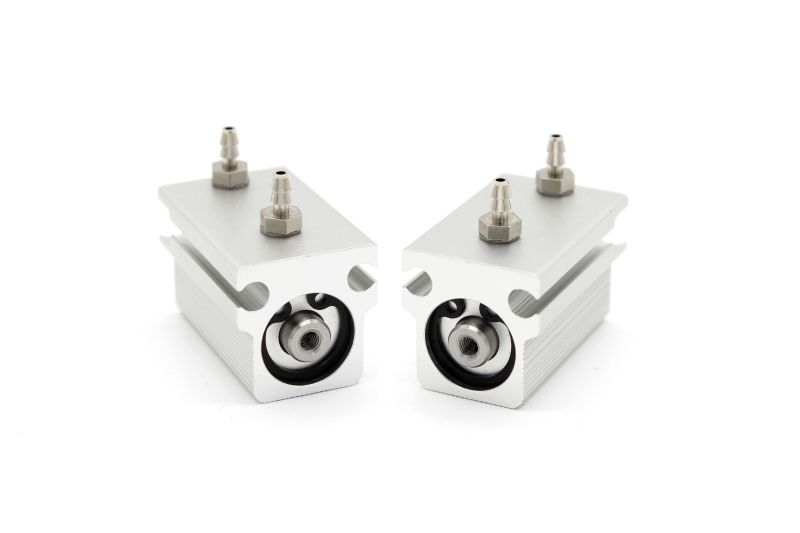In modern mechanical engineering and the automotive industry, cylinders are known as the core components of power systems. Whether it is a fuel engine or pneumatic equipment, cylinders play a crucial role. This article will delve into the basic structure and working principle of cylinders, their applications in various devices, and even future development trends, striving to provide readers with a comprehensive and detailed perspective to help better understand this important component.
1、Definition and Structure of Cylinder
A cylinder is a closed container, usually made of metal, used to contain the compression, expansion, and flow of gases or liquids. In internal combustion engines, the cylinder is a key component that drives the reciprocating motion of the piston, thereby achieving energy conversion. The structure of a cylinder usually includes the cylinder block, cylinder head, piston, piston ring, crankshaft, and intake and exhaust valves.
1. Cylinder block: The cylinder block is a rigid structure that bears high pressure generated from the combustion process. Its design usually considers heat dissipation, wear resistance, and feasibility of processing.
2. Cylinder head: The cylinder head is located at the top of the cylinder and usually includes intake and exhaust valves, responsible for the entry and exit of gases. A well-designed cylinder head can effectively improve engine efficiency.
3. Piston and piston ring: The piston moves inside the cylinder to complete the compression and expansion process. The piston ring is used to seal the cylinder, prevent combustion gas leakage, and promote uniform distribution of lubricating oil.
4. Crankshaft: The crankshaft connects the piston and the output of the engine, and is responsible for converting the reciprocating motion of the piston into rotational motion. The design and material of the crankshaft directly affect the overall performance of the engine.
2、Working principle of cylinder
The working principle of a cylinder can be understood through the four stroke cycle of an internal combustion engine, which consists of four stages: intake, compression, combustion, and exhaust.
1. Intake: During the intake stroke, the piston in the cylinder moves downward, the intake valve opens, and external air or mixed gas is drawn into the cylinder.
2. Compression: When the piston moves upward to the top of the cylinder, the intake valve closes and the gas is compressed to a high pressure state. The pressure and temperature during this stage will significantly increase, preparing for subsequent combustion.
3. Combustion: At the top of the compression stroke, the spark plug ignites the mixed gas, instantly producing high-temperature and high-pressure gas, which drives the piston downward. This process converts chemical energy into mechanical energy.
4. Exhaust: Finally, the piston moves upward again, the exhaust valve opens, and the exhaust gas is discharged from the cylinder, starting the entire cycle again.
Through the above working mechanism, the cylinder can efficiently convert fuel energy into mechanical energy, thereby driving vehicles or machinery equipment.

3、Application areas of cylinders
Cylinders are widely used in various fields such as internal combustion engines, aviation engines, pneumatic equipment, and compressors. In the automotive industry, the performance of cylinders is directly related to multiple aspects of the vehicle, such as power output, fuel economy, and emission levels.
1. Automotive engine: Whether it is a small sedan or a large commercial vehicle, the cylinder is the core component of the engine. Modern cars commonly adopt multi cylinder designs to improve power and work efficiency. At the same time, technologies such as turbocharging are used to improve the intake volume and combustion efficiency of the cylinders, further optimizing the overall performance of the vehicle.
2. Motorcycles and ships: Motorcycles and ships can also use cylinder technology in engine design, and different types of cylinder designs can meet different power requirements. For example, motorcycles typically use smaller cylinders to achieve lightweighting, while high-speed ships may use atmospheric cylinders to enhance wave breaking capabilities.
3. Industrial equipment: In various types of industrial equipment, such as compressors, pneumatic tools, and robotic arms, cylinders also play an important role. Pneumatic cylinders can convert the energy of compressed gas into mechanical action and are applied in fields such as automated production lines and material handling.
4、The future development trend of cylinders
With the continuous advancement of technology, innovation in cylinder design and materials is driving the realization of more efficient and environmentally friendly engine systems.
1. Application of lightweight materials: In order to improve the energy efficiency and performance of engines, many manufacturers have begun to develop lightweight alloys and composite materials for the manufacturing of cylinders. These new materials can not only reduce the weight of vehicles, but also improve wear resistance and strength.
2. Intelligence and Electrification: Faced with changes in environmental regulations and market demand, more and more car manufacturers are introducing intelligent sensors and electric control technology in cylinder design to optimize fuel combustion and achieve precise power control. These technologies not only improve driving efficiency, but also reduce emissions.
3. Application of renewable energy: The development of electric vehicles and hydrogen fuel vehicles has posed new challenges to the cylinder design of traditional internal combustion engines. Although electric motors no longer use cylinders, future hydrogen fuel internal combustion engines may require updated cylinder systems to improve combustion efficiency and reduce nitrogen oxide emissions.
Conclusion
Cylinders play an indispensable role in the mechanical engineering and automotive industries. Understanding the structure, principles, and wide applications of cylinders can help us better recognize their core role as power systems. Looking ahead to the future, with the continuous emergence of new materials and technologies, the design and functionality of cylinders will continue to develop towards greater efficiency and environmental friendliness, driving progress and innovation in the entire industry.
Whether it is car enthusiasts pursuing performance or modern consumers concerned about environmental protection, the evolution and development of cylinders will bring us better power experience and better driving enjoyment.
Prev:No more
Next:Hook cylinder: a sophisticated tool in the field of industrial automation







